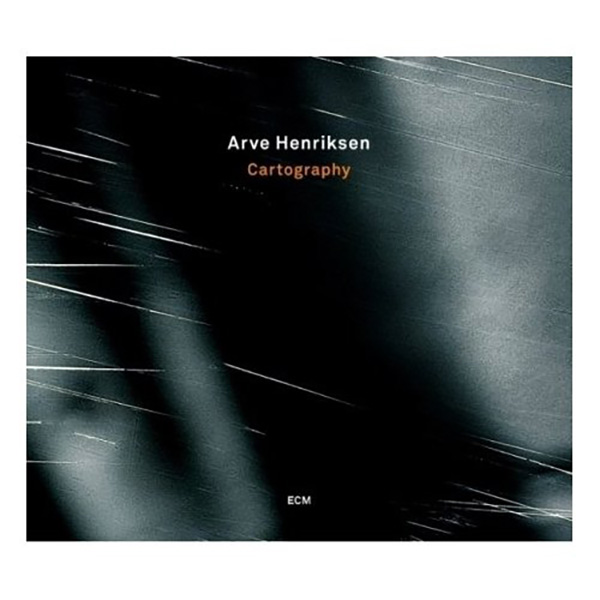
by Tim Owen
December 22, 2008
/ ALBUM
Inhabits a liminal zone between chamber Jazz and pure ambient soundscaping
Over the past ten years, Arve Henriksen has become one of ECMs principal artists. The work that he records for the label stands in counterpoint to his work elsewhere - principally with Supersilent and alongside Iain Ballamy in Food - and adheres closely to the ECM signature aesthetic: beautiful, austere, and essentially sui generis. He has recorded for ECM under the leadership of various other, predominantly Scandinavian artists; notably as a member of Christian Wallumrod’s chamber jazz groups since No Birch (1998), and most recently on Frode Haltli’s superb Passing Images (2007). Henriksen has a series of own-name releases on the ECM-associated Rune Grammofon label, but this is his first date for ECM as a leader.
Beyond ECM, Henriksen has also become closely associated with the Norwegian Punkt festival, which has been well established in its Kristiansand home for some years, but only recently made the transition to London. The Punkt methodology sees performances being sampled ?live’ for immediate remixing by a second artist. Cartography extends that process to the studio for further mediation, in close collaboration with Punkt founders Jan Bang (live sampling and programming) and Eric Honoré (synthesizer, samples), among a diverse group of contributors. Samples, field recordings and a subtle use of string and vocal arrangements are all key elements, entwined with studio contributions recorded in multiple locations. The album is presented as “a map of moods”, but in truth the character of the entire album is consistent throughout: carefully considered, richly textured, and inhabiting a liminal zone between chamber Jazz and pure ambient soundscaping.
Even to an ininformed listener, the two tracks actually recorded live at Punkt are indistinguishable from the surrounding material. The first of these tracks, Poverty And Its Opposite, starts with an impeccably tasteful trumpet solo over a generically tastful ambient backing, either a field recording also contributed by Henriksen or Jan Bang’s live sampling (I would guess that this is a Punkt ?remix’). But things soon get more interesting. A skein of restless, skittering percussion grabs the attention, and a lovely melody does emerge. This sets a template for much of what follows.
A couple of tracks featuring only Henriksen and Bang are the least interesting, but Sorrow And Its Opposite is a real highlight: Almost subliminal, with ethereal hymnal vocal samples and strands of electronic distortion. A brief interpolation of contrastingly pastoral orchestration leads to a long coda of piano (again, presumably, one of Bang’s samples, since no pianist is credited). Ouija adds Honoré, with the trio producing a somewhat more agitated and unsettling ambience. Bang makes good use of multitracking on Henriksen’s trumpet.
It is the use of vocal samples which makes many of the tracks truly engrosing. Recording Angel features a wordless Henriksen vocal and layers of subtle effects that sporadically mimic haunting vocal cries. After the trumpet enters, these strands intertwine, unified by a subtle bass pulse, before the sampled voices of ECM artists Trio Medi?val briefly emerge. The cumulative atmosphere is an aural shrouding in mist.
The other piece recorded at Punkt, Famine’s Ghost, features an acapella introduction by Trio Medi?val’s soprano, Anna Maria Friman, singing fragments of the Anima Mea. Its second part features Stale Storlokken, one of Henriksen’s partners in Supersilent, on synth and samples, but he maintains the mood already established.
Ex-Japan vocalist David Sylvian contributes spoken narratives to two tracks, and also programms part 1 of the first, Before And Afterlife, his voice multi-tracked and layered out of sync. The ?narrative’ here is elliptical, like an everheard reverie, though its delivery seems purposeful. Part 2 is purely instrumental, reflective, with an effective use of near silence.
The most forceful piece, Migration, is very much in an ambient instrumental style pioneered by Sylvian’s early solo work, falling somewhere between the pieces that Robert Fripp to contributed Gone To Earth and the long ambient piece Steel Cathedrals (which, incidentally, featured Kenny Wheeler in a prominent cameo). Synth washes, what sounds like clay percussion, and double-tracked trumpet are the order of the day; It is undeniable seductive.
Taken purely on its own merits, this meticulously lovely album has quickly become one of my favourites of 2008. But I do have misgivings, which I felt even before reading the press release in which Henriksen is quoted as saying “I’ve been trying to find ways of playing that feel right for me and areas of music that interest me enough to keep returning to them. And I’ve been feeling uncomfortable with the idea of playing ‘improvised jazz.” The main arena in which Henriksen plays improvised Jazz is Supersilent; to my mind one of the most dynamic, creative, and above all original groups of the past quarter century. Much as I sympathise with Henriksen’s feelings, even as I surrender to the siren’s song of Cartography, I have to acknowledge that this step sideways - into territories already mapped by Jon Hassel among others - has not produced the most original music Henriksen has made, superb as it is.
blog comments powered by Disqus